Connie's cucumber: variety description and reviews of vegetable growers
Everyone's favorite cucumber culture is not as easy to grow as it seems at first glance. When you invest energy, time, money, caring for the greenhouses, you want to get the most out of it. Any vegetable grower will be pleased with an early and friendly harvest, unpretentiousness, delicious fruits. The Connie F1 variety meets these requirements.
Description: external features of the variety
Connie's cucumber belongs to early heterotic hybrids (F1) parthenocarpic type and feels great both in greenhouses and in the open field, adapting to the characteristics of different climatic zones. Female flowers do not need pollination and are capable of setting fruit in all weather conditions.
Connie is characterized by external features:
- a relatively small stem, from which lateral shoots are 2-3 orders of magnitude;
- the formation of 3-9 ovaries in the nodes;
- a solid, wrinkled leaf blade;
- cucumbers of limited growth and small size.
An early and gradual yield of the harvest is suitable for the description of the variety: the first harvest is 9 kg / sq. m, marketable - 14 kg / sq. m. This is a good indicator for hybrid varieties, given that the fruit is formed in small sizes.
The fruits are characterized by:
- cylindrical, elongated shape;
- maximum length 10 cm;
- small lumpy, thin skin;
- dark green color;
- weighing up to 100 g;
- crunchy and juicy break.
With proper care and adherence to all agrotechnical measures, the Connie variety will delight you with a bountiful harvest of tasty greens, which are used for canning and preparing fresh salads.
Characteristics of the variety Connie F1
This variety of cucumbers has a lot of advantages, among which I would like to emphasize:
- The period from germination to fruiting is 47-50 days. With the seedling method of growing, cucumbers can be enjoyed in June.
- Zelentsy is completely devoid of bitterness. Regardless of the growing conditions, bitter specimens are not found.
- It tolerates temperature extremes, therefore it is good for growing in areas with a continental climate.
- It is characterized by a long fruiting period, which is 3-4 weeks.
- Resistant to many dangerous diseases affecting pumpkin seeds: root rot, powdery mildew.
In order for fruiting to be plentiful, you need to follow a few simple rules of planting and care. The choice of location is of great importance. Usually in northern latitudes, this is a greenhouse, which is best located in an open, well-lit place.
Another important condition is crop rotation. If you plant cucumbers on the same beds every year, pest larvae and fungal spores accumulate in the ground. You can not plant cucumbers after other pumpkin (close relatives); good precursors are peppers, tomatoes, courgettes, and beans. The Connie variety is a lover of fertile and moist soils, so loosening, feeding and watering are important procedures.
Seedling growing
The land for seedlings is prepared in advance, digging holes and filling them with humus, peat, ash. For 1 sq. m. no more than 2 plants are placed. You can not plant seedlings if there is a threat of recurrent frosts and the soil temperature has not risen to + 12-15 ° C.
If a warmed ridge is used for seedlings, then under the film it will grow much faster, and the crop will be harvested even earlier. When planting under the open sky, it is better to cover the seedlings so that they can acclimatize. Young shoots are planted in a checkerboard or linear pattern.
On a note
Healthy seedlings have three formed leaves, a well-developed root system, they are strong and not elongated. Weak plants will take a long time to acclimate and get sick when they find themselves in new conditions.
Greenhouse care rules
Since an artificial microclimate is created in the greenhouse, it is necessary to maintain the desired temperature, air humidity, and illumination.
- Optimum temperature - + 20-23 degrees. In hot summer, a mode of ventilation and shading (glass tint) is required.
- High humidity. In a dry atmosphere, you need to humidify the air by spraying on the leaf.
- High-quality watering. It is supposed to irrigate 2 times a week under the root with warm, settled water.
- Loosening. The first time - a month after planting, then - after watering. Loosening should be done carefully, since the root system is close to the surface.
- Top dressing. After planting, nitrogen is introduced for growth, during the fruiting period for setting fruits - superphosphate, potassium, humate. Useful organic feeding with bird droppings, herbal infusion, mullein. Ash contains trace elements necessary for the plant, so it is added to the soil during loosening.
Advice! When growing cucumbers, Connie uses an interesting trick: they increase the content of carbon dioxide in the air, which affects the yield. To do this, a barrel with a mixture of manure and water is placed in the greenhouse, where the fermentation process takes place with the release of CO2.
Outdoor care rules
In the open air, the growth of the Conny cucumber variety depends more on climatic conditions and to a lesser extent on the grower. Traditional care methods are carried out:
- installation of trellises for wind protection and good branching and ventilation of the lashes;
- regular watering in dry summer, especially plentiful during the period of fruit formation;
- harvesting weeds, which not only takes away nutrients, but also becomes a breeding ground for infection.
With excessive moisture and abundant dew, it is advisable to carry out preventive treatments with "Fitosporin" or copper sulfate. The hybrid variety is resistant to infections, but under unfavorable external conditions it can get sick.
Reviews of vegetable growers
Gardeners are pleased with the versatility of the variety, the ability to use it fresh and canned. It is important that zelentsy do not outgrow, keeping their presentation for a long time. The variety has earned positive reviews for long-term fruiting, abundant harvest. The taste of the fruit was not ignored either. Vegetable growers note that the variety has practically no shortcomings, and early fruiting for northern latitudes is a great luxury after a long winter.
A few examples of the opinion of vegetable growers:
- I live in Siberia, and I grow the Connie variety through seedlings. Seed germination is good, and the seedlings grow friendly and strong. It takes root well, tolerates cool nights. I like that the cucumbers do not grow to gigantic sizes and delight with the harvest for a whole month (Olga, a vegetable grower with 10 years of experience).
- I liked the Connie variety: it is tasty, crispy, the greens are small, so it is convenient to marinate them. The germination is good, and the yield is excellent (Boris, a vegetable grower with 5 years of experience).
- I have tried many varieties of cucumber. I try not to limit myself to one variety on my site, but to plant several at once. This allows you to feast on cucumbers all summer. Among the first, the Conny variety ripens, from which I always prepare tender, tasty salads (Marina, a vegetable grower with 22 years of experience).
- I always experiment with varieties, and cucumbers are no exception. The Connie variety seemed interesting - a hybrid that stoically tolerates bad weather and gives a good harvest in the open field. Other varieties are outgrowing and must be removed regularly. Connie doesn't need such an eye. The cucumbers in the garden stay small and neat (Oksana, a vegetable grower with 7 years of experience).
- I would like to note the absence of diseases in the cucumber culture.Rust and powdery mildew is a real scourge on cucumbers. As for Connie, I tie his whips to the trellis. And even in a wet, rainy summer, they are well ventilated: the infection bypasses a strong hybrid (Oleg, a professional vegetable grower).
Each grower selects a proven variety, but he never refuses to experiment with a novelty. And if the Connie F1 variety has not yet become a favorite, then after planting it for testing, no one can refuse juicy and crispy greens.

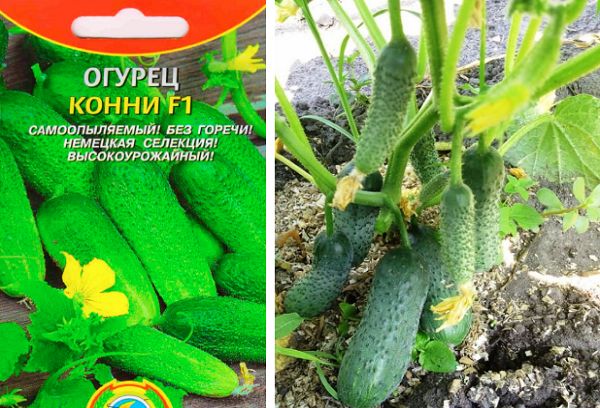
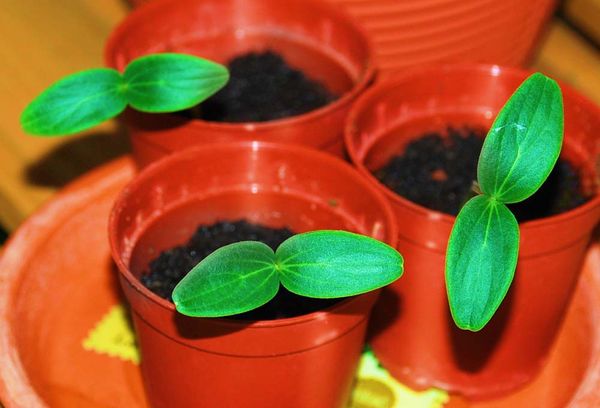
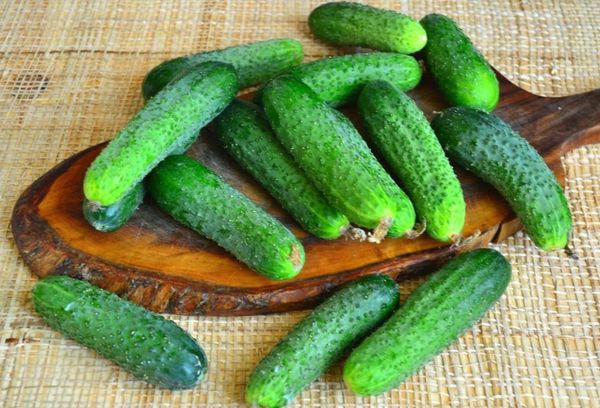
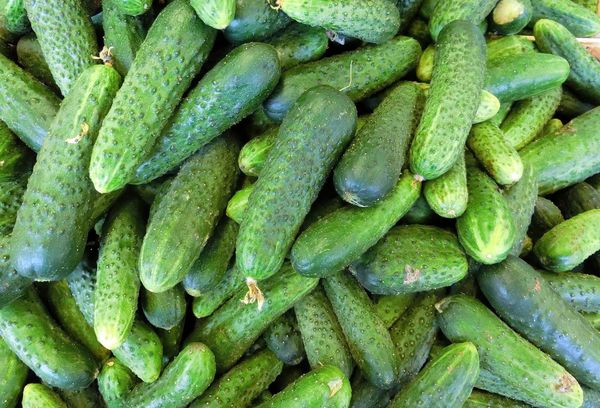
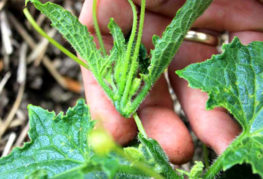


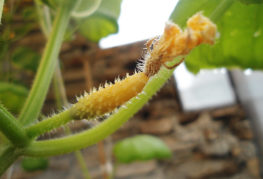
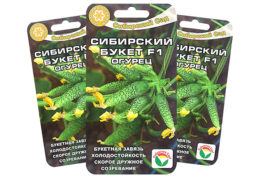
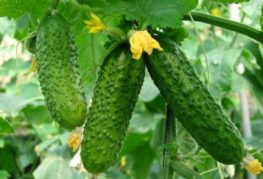
and will be published shortly.